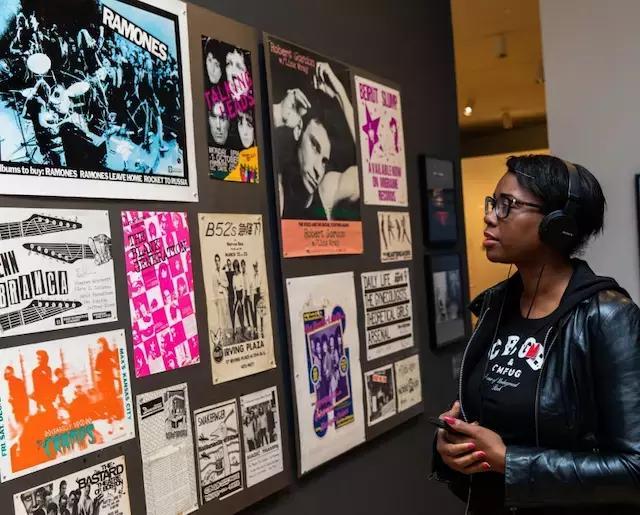(单词翻译:单击)
Punk's powerful images
朋克文化表达了什么?
Brightly dyed hair, ripped clothes and black leather – Avril Lavigne and Rihanna are just the latest in a long line of artists to embrace the style of punk.
鲜艳的发色、破边的衣服以及黑色的皮衣 —— 在一众喜爱朋克风格的音乐人之中,艾薇儿和蕾哈娜只是近期的两位代表人物。
Punk first exploded onto the British and US music scenes in the 1970s. A new exhibition, titled Too Fast to Live, Too Young to Die: Punk Graphics 1976-1986, opened at New York City's Museum of Arts and Design on April 9. Through hundreds of posters, album covers and magazines, it takes visitors through the history of punk's images.
上世纪70年代,朋克这一概念首次在英美乐坛爆火。一场名为《来去匆匆,英年早逝:朋克图像1976-1986》的新展览已于4月9日在纽约市艺术与设计博物馆展出。该展览通过上百张海报、专辑封面以及杂志,带领参观者们回顾了朋克图像的历史。
The New York Times calls it "a fascinating look" at the anti-authoritarian visual language of punk.
《纽约时报》称其呈现了朋克文化中反权威视觉语言的“迷人之处”。
Of course, these are just images. What was punk about and why are the images important?
当然,这些都只是图像罢了。那么,“朋克”究竟是什么?为什么这些图像如此重要呢?
Punk came about as a working-class reaction to mainstream music and culture. Artists took every aspect of rock music to new extremes. The music was louder and faster. Singers shouted as much as they sang.
朋克源于劳动者阶层对于主流音乐及文化的反应。艺术家们将摇滚音乐的方方面面推向了新的极端:音乐声更大,节奏更快。歌手们声嘶力竭地唱歌。

Worried about their futures, punks shouted anti-authoritarian lyrics that bemoaned contemporary culture and what they saw as an unfair economy. The UK singer Johnny Rotten famously sang, "I am an antichrist / I am an anarchist." Such lyrics upset people in mainstream British society. Punk wasn't played on many radio stations.
对未来感到担忧的朋克一族大声吼出了反对权威的歌词,哀叹现代文化以及在不平等经济中的所见所闻。英国歌手约翰尼·罗顿曾有一句著名的歌词:“我是个反基督者,我是个无政府主义者。”这样的歌词令英国社会的主流人士感到不快。许多电台一度都不会播放朋克音乐。
The New York exhibition shows the fashion and graphics punks created to match their controversial music.
这次的纽约展览展现了与备受争议的朋克音乐相契合的时尚和图像。
An important aspect of punk subculture is its anti-commercial, do-it-yourself (DIY) attitude. The musicians designed almost everything themselves, from album covers and concert posters to music venues and even their clothes. People didn't buy punk fashion at the store. They ripped up their old blue jeans at home, spiked their hair with glue, and dyed their hair with things in their kitchens.
朋克次文化的一大重要方面是其自力更生的反商业态度。从专辑封面、演唱会海报、音乐表演场地,乃至自己的服饰,音乐人们几乎自行设计了一切。这些人并不会在商店中购买朋克服饰。他们在家中撕开自己破旧的蓝色牛仔裤,用发胶做出发型,并用厨房里的材料给头发染色。
Today, punk's emphasis on low-cost self-expression still inspires young people to just be themselves. "Punk is the freedom to create ... " said US punk icon Patti Smith. "The freedom to be successful, freedom to not be successful, freedom to be who you are. It's freedom."
如今,朋克所强调的低成本自我表达依然鼓舞着年轻人做自己。“朋克即是创造出来的自由……”美国朋克文化偶像帕蒂·史密斯表示。“成功的自由,不成功的自由,做自己的自由。这就是自由。”


